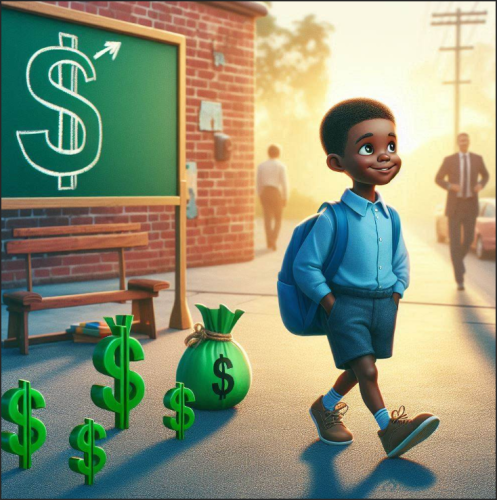The American educational landscape is changing. The Federal Department of Education may dissolve, giving states a unique opportunity to rethink the way education dollars are spent. Virginia should take the lead and design an approach that puts flexibility, choice and long-term student benefits first, rather than waiting for national solutions which may not materialize.
A student-centered funding model
Imagine a family with two parents who are both working and raising a child. They have limited options to help them navigate each stage of their child’s educational journey. They struggle early on with the cost of childcare, and are unable to enroll their child in public pre-K before age 4. They make decisions for their child based on the options available and not necessarily on what is best. After high school, parents worry about the cost of college or vocational training.
Imagine an alternative. A student-account system that allows families to access their allocated education funds directly, while still keeping the resources in the state education system. These accounts let parents see how much money is available per student, and then decide whether to send their child to public school, homeschool, or pursue alternative education.
The district will begin funding daycares, preschools, and pre-K programs at the age of three or four. Families could use funds to support early learning instead of waiting until the kindergarten year for formal education. This would relieve financial pressure on families and ensure that children are better prepared to start school. Education shouldn’t be a one-time event. It’s an ongoing journey that needs to be supported right from the start.
Students progress and funding follows, whether they choose to stay in public schools or other alternatives, such as hybrid homeschooling or specialized private school. This model has a key difference: unused funds are rolled over each year, and accumulate over time. Families can now save for future education expenses at any age. Savings from elementary and middle schools could be used to pay for specialized high-school programs. Funds rolled over from K-12 may also be used towards in-state colleges, vocational or trade training, as well as community colleges.
This is not a voucher system, which diverts funds away from public schooling. This model keeps Virginia education dollars in the system. It ensures that funds are directed to students while keeping funding within Virginia’s public, vocational, and private institutions.
The role of school districts
This model doesn’t dismantle local school districts or reallocate tax revenues. It ensures that funding per student – federal, state and district contributions – is fully visible and follows each student, rather than being exclusively tied to a district’s central school budget. Families can still choose their preferred options within the district, but they will be restricted to only those approved by that district. This includes public schools, career-technical education programs, hybrid models or approved alternatives in private and homeschooling. Parents can make their educational choices transparent by knowing how much money they need to spend.
Wealthier districts will continue to supplement education with local taxes, allowing them to invest more resources in their schools. Students in low-income districts, who often have less educational options, would benefit from increased school choice, greater access to alternative programs and financial flexibility. They could then seek out specialized instruction, training or academic environments better suited to their needs.
This model, which empowers parents and strengthens Virginia’s educational system by keeping dollars in the state, ensures that students get an education tailored to meet their needs, without the financial burdens of student loans.
A Path to Education without Student Debt
This model has a critical feature: any money that is not spent rolls over. These funds do not disappear at the end each year. Instead, they accumulate and can be used to fund post-secondary studies. Students can choose to go to a Virginia university, community college or trade school with a solid financial base. This could eliminate or reduce the need for student loan payments.
It ensures students can access higher education and training for the workforce without having to accumulate crippling debt. Virginia could be a leader in the fight against the student loan crisis by proving a student-centered, well-structured funding model that can provide opportunities without financial burden.
Seizing the Moment to Make Meaningful Change
Virginia faces a decision as states begin to gain more control over education policies: keep the status quo, or take advantage of this opportunity to create an education system which puts students first. This model allows Virginia students to afford a full school year, as well as a bright future, by keeping funds within the state and giving families more flexibility.
NEWSLETTER SIGNUP
Subscribe to our newsletter! Get updates on all the latest news in Virginia.


